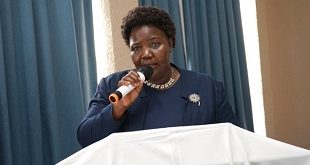
Kampala, Uganda | THE INDEPENDENT | Fewer women have access to the World Wide Web than men, especially in sub-Saharan Africa, according to a report released by the International Telecommunications Union.
The report; Measuring Digital Development: Facts and Figures 2019, estimates that over half the total global female population is still not using the Internet. The data shows that women’s Internet use is falling behind at only 48 per cent, compared with 58 per cent of men.
It adds that while internet use in developed countries is close to 90 percent, in some African countries, it is below 30 percent, and in every region, more men than women go online except the Americas, where the ratio is about the same. The barriers to internet use amongest women are cultural, financial and educational, mostly among the poor countries.
Susan Teltscher, the Head of the Human Capacity Building Division of the ITU’s Telecommunication Development Bureau explains that the trend arises out of affordability and lack of digital skills among women and the absence of internet service in rural areas where more women are based.
Doreen Bogdan-Martin, Director of ITU’s Telecommunication Development Bureau calls for targeted efforts to lower the cost of broadband and innovative policies to finance network rollout to unconnected populations.
“Even where connectivity exists, we need to be more creative in addressing critical issues like the affordability of service, cost of handsets, and lack of digital skills and literacy to enable more people – and especially women – to participate and flourish in the digital economy” says Bogdan-Martin.
On a positive note, ITU data shows that 97 per cent of the world population now lives within reach of a mobile cellular signal and 93 per cent within reach of a 3G (or higher) network.
In the Americas, the Asia-Pacific region and Europe, over 95 per cent of the population is covered by a 3G or higher mobile broadband network. In the Arab States, the figure stands at 91 per cent; the Commonwealth of Independent States, 88 per cent; and Africa, 79 per cent.
ITU estimates that 57 per cent of households globally will have Internet access at home by the end of 2019. However, the number of households with a computer at home is only expected to rise by about one percentage point – to 49.7 per cent – between 2018 and 2019.
Slowing growth in domestic computer ownership is accounted for by the fact that in many countries, computers are no longer needed for home Internet access, with people simply connecting over smart phones.
*****
URN
 The Independent Uganda: You get the Truth we Pay the Price
The Independent Uganda: You get the Truth we Pay the Price


